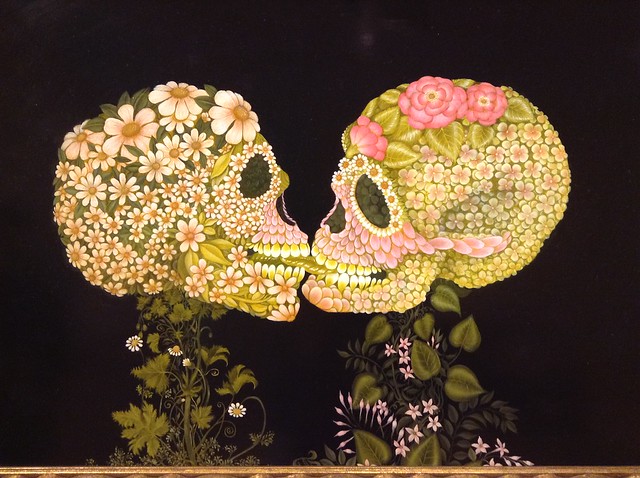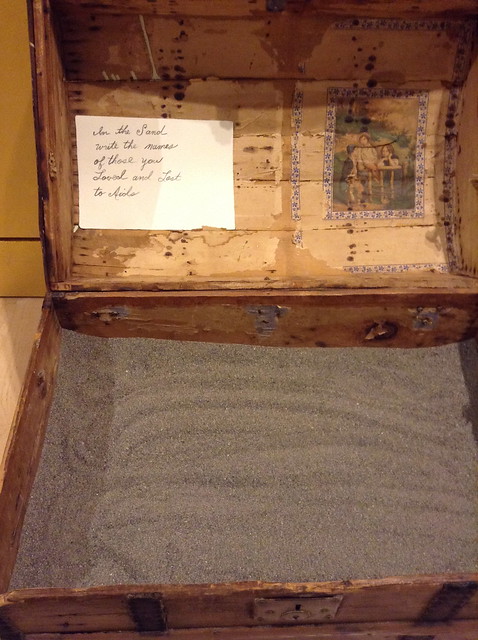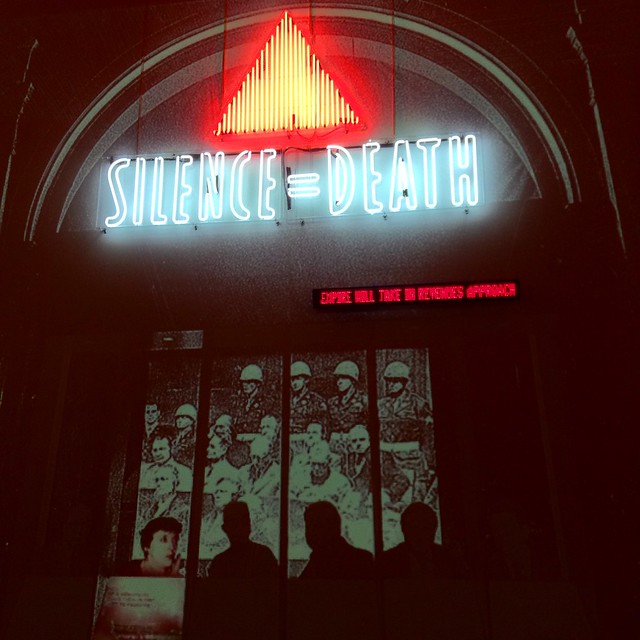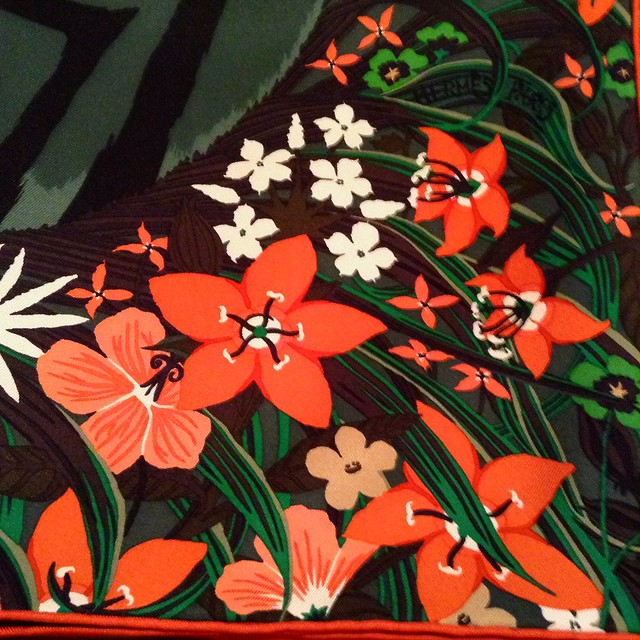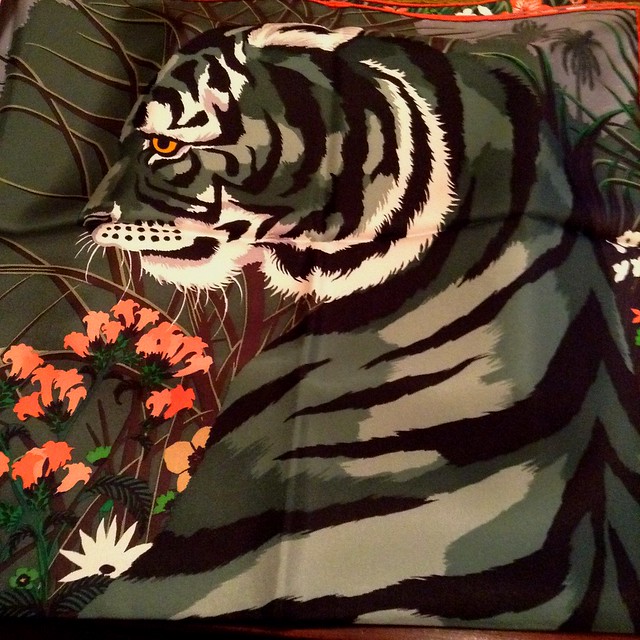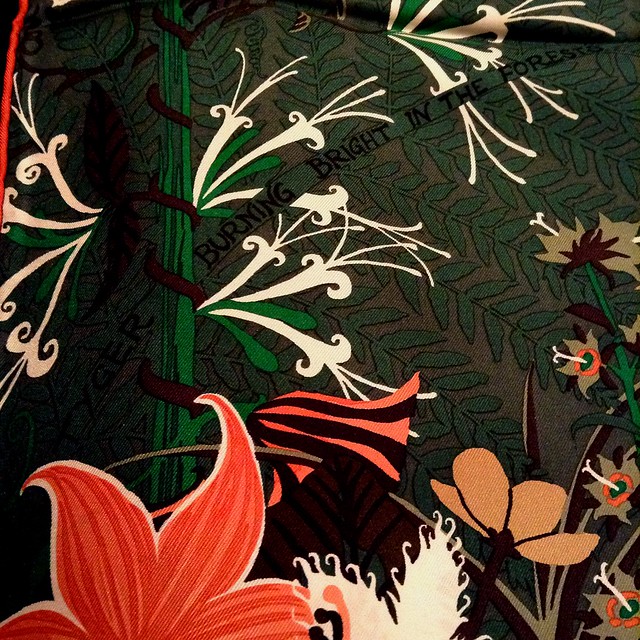I invited my friend Danielle to write a blog post about her experience surrounding the Malheur NWR, based on a longish comment she left on Facebook. What she sent to me gave me chills. I really hope you will take the time to read the full piece. It is worth your time. And thank you, Danielle, for trusting me to share your story.
***
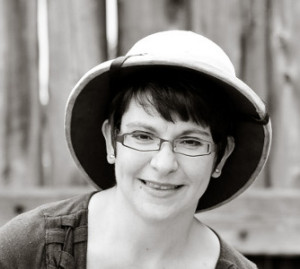
Wearing the stereotypical pith helmet as a joke for a photoshoot at Fort Vancouver. Photo Credit: Bean and Sprout Photography.
**
I have struggled with a lot of deep pain and anguish since I first saw the Bundy militia show up in Burns, Oregon to protest the prison sentence of Steven and Dwight Hammond for arson on BLM lands in 2001 and 2005.
Part of it is because I spent part of my childhood in Ontario, Oregon. My grandparents were farmers in Vale, and my father loved hunting, fishing, and being outdoors. I spent a great deal of time following him through the beautiful rivers, streams, lakes, canyons and mountains of the High Desert. We didn’t live in Burns, but we spent time around there, too.
My fifth grade class at Alameda Elementary in Ontario spent the year studying the Malheur National Wildlife Refuge. Our art projects involved constructing a color guidebook of the different bird species there and habitat collages of the different species. Our spelling words were the names of birds, plants, and natural features. Our history lessons were about the rich prehistory of the area, learning about how millions of indigenous people who thrived in the lakes, and the ways early farmers used the lands. We did science experiments about caves. It culminated in a five day field trip to the Station, where we followed the amazing rangers and scientists recording and watching the birds, preserving their habitats, and the rich cultural history of the area. I discovered that the HQ building was built on a significant prehistoric village built by the Wadatika, ancestors of the Burns Paiute.
I will never forget the moment when our ranger guide pointed out the two snowy owlets in a nest above us, blinking at the gaggle of noisy kids.
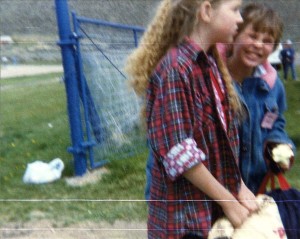
Malheur trip 1988: My friends Sally and Shawna. This is the only photo I have of that trip to the Refuge in 1988, taken the same day as that fateful moment with the owlets because all of my photos were destroyed in a flood in 2005. Photo Credit, Danielle D.M. Gembala
I stumbled over a projectile point on the ground that had been scuffed up by the feet that had walked before me.
That had been put there by feet that had walked this same ground so very long ago.
But that isn’t the only reason the Bundy militia in the Malheur Refuge bothers me.
I realized, growing up among ranchers and farmers, loggers and hunters, miners and lawyers, that we don’t know what is under our feet, that surrounds us. The beauty of. Not until it is gone. I realized that our ignorance, our blind focus on our own use and ideas of the land often leads to tragic consequences for everyone.
I decided I could change that. That I would use my own experience and knowledge as a voice.
*****
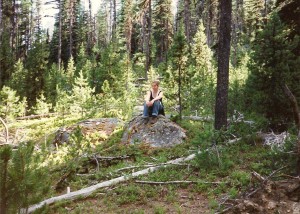
1996: Me at Two Dragon Camp, a Chinese mining site in the the Wallowa Whitman National Forest. Photo Credit, Gary Keenan.
I worked first for the Forest Service as a volunteer while doing my undergraduate honor’s thesis and my master’s research on the archaeology and vernacular architecture of 19th century Chinese mining site in the Wallowa Whitman National Forest and Italian railroad camps over Santiam Pass in the Willamette National Forest.
I went on to study archaeology in graduate school at the University of Washington in 1998.
After my first year in school, I went to Russia to excavate at Pavlinovo, an Iron Age fortress in Western Siberia. While driving through the countryside, our driver pulled a sharp U-turn and I heard gunfire. I knew only three phrases in Russian, but the French archaeologists sitting next to me told me that the driver had to evade crooked police stopping vehicles at a roadblock, because they’d gotten word “Western foreigners” were in the area. These same police later searched our camp, so the few “Westerners” hid in tents occupied by the students from Belarus while the police searched the rest of the camp. I suspect someone bought them off.
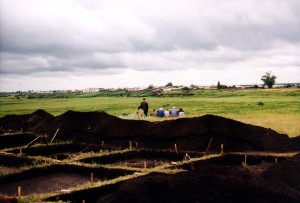
Archaeological excavations at Pavlinovo, and Iron Age archaeological site, Kaluga Oblast, Western Siberia. 1999. Photo Credit, Danielle D.M. Gembala
I was bitten by giant mosquitoes, had to eat, drink, and bathe in dangerously polluted water, and witnessed a lot of shady mafia-esque activities. It was uncomfortable, but an adventure. When I learned my colleagues face similar dangers here, I realized that I didn’t need to go far for danger if I wanted it.
Soon after, a colleague invited me to work with her in Bosnia to help identify human remains in mass graves. I declined. I was in grad school, and I had just returned from Russia. I wasn’t ready to be shot at again, and I wasn’t sure I had the strength to face that level of horror.
Instead, I interned at the Burke Museum, where I worked in a room down the hall from The Ancient One, a.k.a. Kennewick Man, while Army Corps of Engineers archaeologists cataloged and studied the bones during the drawn-out lawsuit. It turned out to be a horror in my own backyard.
I listened to native peoples’ stories, and wept at the tragedies I have been part of. That I’ve benefitted from. I have held hands with people who have had all they know taken from them systematically, then erased because they are not descended from white Europeans.
I learned that it isn’t enough to put artifacts in collections and preserve them. They need to be touched, to be accessible, to be known to remain important.
So, I joined several museologists and local tribal members in a project to take their hidden cultural heritage and make it accessible, touchable, available to children in tribal schools, and to the public in the Archaeology of West Point Burke Box education kits.
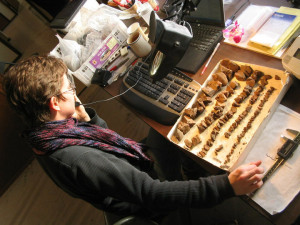
Station Camp Photo: Analyzing Fire Cracked Rock (FCR) in a frigid lab at Middle Village/Station Camp in 2005. Photo Credit, Melissa Darby.
After I received my masters in 2001, I moved back to Oregon, and worked for many years as an archaeologist for Fort Vancouver National Historic Site in Vancouver, Washington. Our team worked at sites and with collections from around the Pacific Northwest, including Fort Clatsop and Middle Village/Station Camp at the mouth of the Columbia River, and Cathlapotle at the Ridgefield Wildlife Refuge. I gave countless tours of the park’s amazing collection, and instructed new students and volunteers in active excavations and laboratory work to preserve the past, on public display for visitors every single day of my job.
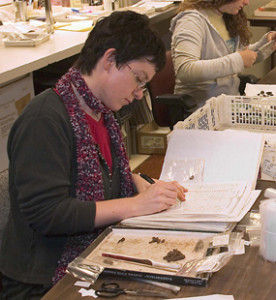
Analyzing metal artifacts in the archaeological lab at Fort Vancouver NHS in 2006. Photo Credit, National Park Service, Fort Vancouver NHS.
I spent over a decade protecting our nation’s heritage and natural resources from people like the Hammonds and these so-called patriots. I attended conferences with antiquities law enforcement officers, and conducted numerous interventions with people attempting to destroy archaeological heritage on our lands. I spent countless unpaid hours developing outreach programs for children and adults to educate people about our natural and cultural heritage, to attempt to change how we approach conservation and historical preservation by making it more accessible and more important to everyone.
I learned how to engage in the difficult, daily dialectic with people who think that their want to use the land in a particular way constitutes a right, not the misplaced privilege that it has been.
I fought to educate people who support and have engaged in riding ATVs through protected habitats and cultural landscapes, intervened with friends who argued for setting back-burn fires, letting them know how they endanger historic structures and landscapes let alone lives and habitats, talked with poachers who chafe at being restricted from “their” forests by “environmentalist hippies” like me.
I’ve sat with developers who want to build roads through prehistoric villages. Given tours to congressional staff members who want to please someone higher up the food chain by making a highly visible project happen regardless of the laws right now, dammit. Congressional staff who work for politicians who get paid by lobbyists who will benefit from their plans to privatize the entire parks system.
I’ve intervened when hot-shot Forest Service crews wanted to trample over extant historic log structures in order to practice fire suppression. I’ve called the police and helped guide them to meth-heads who want to collect metal artifacts to sell for scrap at a historic site. I’ve stopped construction workers who just want to dig that damn hole right through a privy once used by Ulysses S. Grant, on the edge of a cemetery with Native American remains in it. I’ve argued with ranchers who want to graze cattle on public lands so that they profit on directly on the destruction of delicate riparian zones and wildflower habitats, had beer with loggers who want to destroy watersheds for steelhead and salmon. I’ve taught pothunters and “collectors” who loot artifacts and sell off antiquities to form that funnel to an international black market, aka “recreational metal detecting.”
These last ones are the most dangerous. I’ve had multiple law enforcement officers report that illicit antiquities are used to funnel money into most drug, weapons, and human trafficking organizations all the way up to international warlords and cartels. The site Conflict Antiquities has a trove of examples, if you have the heart to read the heartbreaking stories there.
That trail starts with the arrowhead and potsherd enthusiasts.
I lived this for a decade, committed to the mission of preservation, education, and conservation. I’ve been personally threatened. I know people who have been shot at while surveying for pipelines, people who have been threatened. I had to quit when the backbreaking pace of this work threatened to kill me after I was diagnosed with a progressive congenital neurological disorder.
We don’t get paid much. I was paid less than the entry-level construction workers I supervised. We don’t do it for the Indiana Jones-style hats, or the glory of being covered in the dirt, or living out of suitcases, waking up arthritic and bruised after another day in the hot sun, or even the non-existent sweet, sweet gold nuggets that everyone asks us if we’ve found yet.
We do this because we all believe in the importance of knowing where we come from so that we know where we are going. Because we believe this is important for all of us, not just us history nerds.
My colleagues have died — and are dying — to protect the past in multiple parts of the world, including the United States.
My heart is in my throat for the rangers and scientists who work for the Forest Service and BLM right now. This is not because I think they will be shot at. Well, partially that.
It is because I fear that all we have done has not been enough to make people aware why this is so wrong, and the desperate pain that arises when you’ve given your life to this greater cause only to have everyone turn their back and say, “Who cares. It’s just a wildlife refuge in the middle of nowhere Oregon. Let them burn the place down.”
*****
The Bundy mob stated they want to open the Malheur Wildlife Refuge and the surrounding lands to ranchers, that the “best possible outcome” will be that the government will “relinquish control” over “their” land and that what they are doing is not “rebellious” but in accordance with the “Constitution.”
These are the same people who have organized ATV trail rides through cultural heritage sites in Utah that are off limits because the mere touch by human hands can destroy what has survived for millennia. They support the “American Lands Council” who argue that all public lands have been “taken from them” by the government. While I agree in some cases with eminent domain cases here and there, by-and-large, the same politicians behind these movements are paid by lobbyists for international corporations who would benefit from the wholesale opening of public lands for stockholder gain for mining, water, agriculture, etc.
You and I, the common citizen, would not benefit in any way. We would probably lose a great deal of our treasures if the American Lands Council got their way.
They use the imagery of Wounded Knee and the history of Native American genocide as symbols of their anti-government movement, while benefitting from the privilege of being on the “winning side” of that war of conquest.
My experience is that these people have no respect for heritage other than their radically skewed version of the past. They have have absolutely no respect for science, for culture, for heritage. They have no understanding of what lies beneath their feet, what is or isn’t a common good, other than how it reflects their shortsighted, narcissistic, vision of the world: a vision that reflects a white man carrying a gun and doing whatever he wants whenever he wants, no matter what anyone else wants or needs.
The Constitution says they can believe that. It is a free country.
Until they use their power, their force, their ignorance, and their hypocritical symbols of “justice” and “Constitutional Rights” to force the government to bend to their personal vision of a world in which “public lands” are theirs to use as they wish, whenever they wish.
The FBI considers domestic terrorism as:
- Involve acts dangerous to human life that violate federal or state law;
- Appear intended (i) to intimidate or coerce a civilian population; (ii) to influence the policy of a government by intimidation or coercion; or (iii) to affect the conduct of a government by mass destruction, assassination. or kidnapping; and
- Occur primarily within the territorial jurisdiction of the U.S.
And that:
18 U.S.C. § 2332b defines the term “federal crime of terrorism” as an offense that:
- Is calculated to influence or affect the conduct of government by intimidation or coercion, or to retaliate against government conduct; and
- Is a violation of one of several listed statutes, including § 930(c) (relating to killing or attempted killing during an attack on a federal facility with a dangerous weapon); and § 1114 (relating to killing or attempted killing of officers and employees of the U.S.).
They are carrying guns. They have told media that they will resort to violence if law enforcement attempts to remove them from federal property. They want to take lands we stole from the people who came before us, a place Teddy Roosevelt set aside for all of us in 1908, and make it into a cattle ranch for their fun and profit. They want to subvert our justice system in order to support two arsonists who poached, burned, and consistently opposed efforts to conserve habitats in areas that are environmentally very sensitive to fire and grazing.
Nevermind that this is the same justice system that a few days ago failed to indict a police officer for shooting of Tamir Rice, a black twelve-year-old child for carrying a toy gun in a park because he was a reasonably suspicious threat.
They are no different than ISIS, who use the same weapons to dismantle the archaeological sites in Iraq and Syria than they do to kill their own people. Who are selling artifacts on the international black market to fund their terrible war to make the world into their radical vision. They are no different than the Taliban, who did the same in Afghanistan. Or the junta who took over Myanmar and destroyed much of the Buddhist heritage there, or the Nazis, who looted and pillaged their way across Europe and North Africa. Or the British in India, or the Americans in North America. The list is really endless.
This is a tactic of terror, conquest, and control.
If you feel any of this is wrong as I do, I’ve learned something else working in public service.
You have a voice as a citizen, while the government employees are tied by bureaucracy and the silence of ethics.
You can call your elected officials, local and national. The Oregon governor, Kate Brown.
Talk to your neighbors, your kids, people you meet online and around town. Educate yourself. Educate others. Be vocal. Be an advocate. For it is all of our future that is at stake, here.
But most of all, please, do not mistake the fact that they haven’t “shot at anyone yet” for peaceful intent. They are not peaceful. They are not patriots. They are not protesters.
They want what is all of ours for their own. And they will kill to get it.

